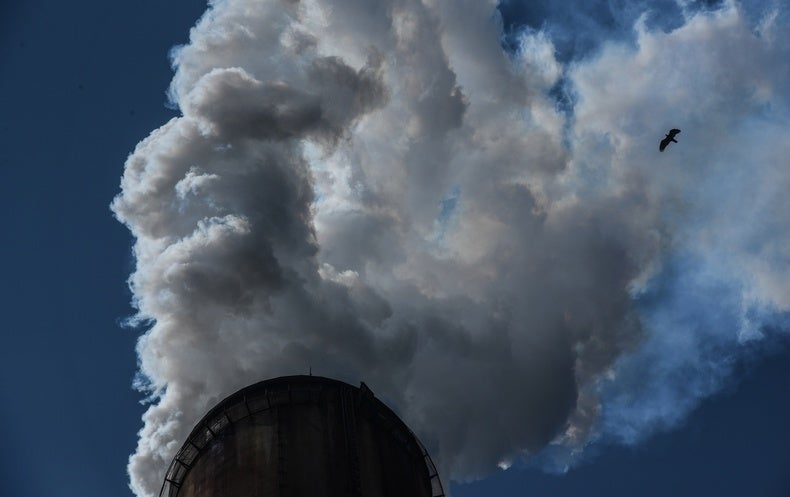CLIMATEWIRE | The Inflation Reduction Act could drive down U.S. emissions by as much as 48 percent by 2035, according to a new analysis in the journal Science.
The paper, released Thursday, is the first to compile results from nine major models to examine the implications of the climate law’s $369 billion in energy and climate spending. More than 30 researchers — from the Department of Energy, EPA and numerous universities and environmental nonprofits — collaborated on the study.
Researchers concluded that by 2035, U.S. emissions could fall by 43 percent to 48 percent, compared to 2005 levels. Without the climate law, that reduction would be between 27 percent and 35 percent.
Amanda Levin, one of the report’s authors and the policy analysis director for the Natural Resources Defense Council (NRDC), said that while the models vary on the projected range of impact, they all show IRA’s policies significantly driving down emissions.
“No matter the differences in how we model the Inflation Reduction Act, no matter what type of model we’re using, all of them agree: the Inflation Reduction Act is the biggest and, most likely, historic climate action to date,” she said.
The reductions aren’t deep enough to meet President Joe Biden’s goal to cut the country’s emissions in half by 2030. That will require additional policies, with some environmentalists calling for stronger regulations to pair with the Inflation Reduction Act’s incentives. EPA estimates its proposed limits on power plant pollution, for example, would result in emissions cuts.
“We’ve taken a huge step forward,” said Jesse Jenkins, one of the report’s authors and an assistant professor of mechanical and aerospace engineering at Princeton University’s Andlinger Center for Energy and the Environment. “But there’s still a gap that remains, despite the progress that was made.”
The models aren’t “crystal balls,” Jenkins said, but show a range of potential outcomes from the Inflation Reduction Act that can inform how the country can fill that gap.
The analysis found that between 38 percent and 80 percent of the Inflation Reduction Act-related emissions reductions would come from the electricity sector, thanks to incentives for wind and solar power and carbon capture. By 2030, the sector would see emissions drop between 47 and 83 percent below 2005 emissions — compared to between 41 percent and 60 percent without the Inflation Reduction Act, according to the analysis.
John Bistline, the lead author and the program manager of the Electric Power Research Institute’s Energy Systems and Climate Analysis group, said the models largely consider how economic factors that will influence the adoption of new technologies. But whether the U.S. overcomes implementation challenges — like scaling up supply chains and siting needed infrastructure — will influence how successful the legislation is in reducing emissions.
“Cutting economywide greenhouse gas emissions in half is really an all-hands-on-deck situation that requires every sort of technology policy tool at our disposal,” Bistline said in an interview.
Conrad Schneider, U.S. senior director for the Clean Air Task Force, said the analysis shows the U.S. will have to take additional steps to meet its climate goals.
The Biden administration “must add a suite of strong greenhouse gas emissions regulations to the incentives in the Inflation Reduction Act to keep the U.S. on track to meeting its climate goals,” said Schneider, who was not involved in the study.
This story also appears in Energywire.
Reprinted from E&E News with permission from POLITICO, LLC. Copyright 2023. E&E News provides essential news for energy and environment professionals.

